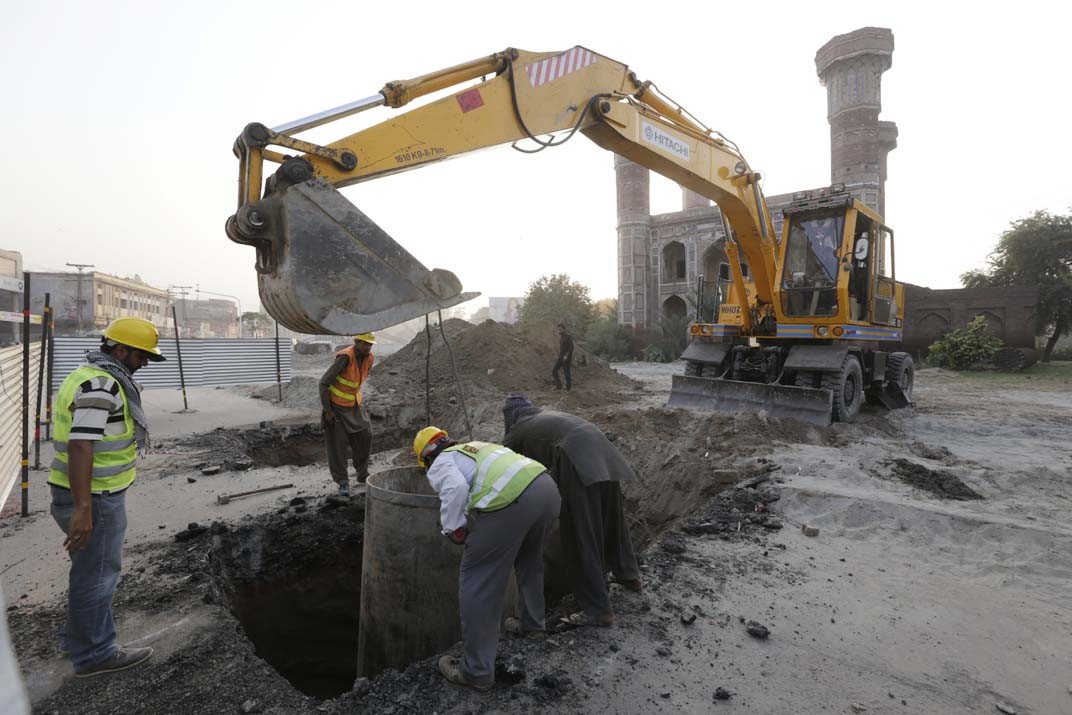
The High Court’s decision highlights a viable avenue to check injustices in the name of governance and development

The August 19 decision of the Lahore High Court to throw out heritage NOCs along the Lahore Orange Metro route came as a pleasant surprise to those following the Orange Metro saga. The case had been fought on three fronts: transparency, environment and heritage.
Of these, the transparency part of the case has yet to be completed and the hearing will continue after the judicial summer break. The petition on the environment was not accepted on technical grounds even though the petitioner’s case was quite strong as the government of Punjab had not done the required assessment of the actual impact on the socio-cultural (communities) and economic (businesses along the route) aspects, which are an integral part of the environment. However, it was the existing heritage laws with the requirement of strict construction regulation within 200 feet of the site’s boundary that played a crucial part in court’s acceptance of the petitioners’ prayer.
The Punjab government’s acts of blatantly breaking its own laws say a lot about our current predicament, where ordinary citizens can’t conceive of making the state accountable. This despondency and cynicism was the biggest hurdle in front of the #RastaBadlo activists and thousands of those people who were adversely affected by the ill-planed and rushed project. The hegemony of the executive over all aspects of state governance and a publicly accepted fact that come what may, the current chief minister always gets his way, was the primary reason behind people’s perception. The High Court decision has shattered this perception. However, it will be up to the Supreme Court now to either uphold the principle of state accountability or to allow free reign in the name of democracy and public interest.
In reaction to the decision, the Punjab government has shown a steely face stating that the work will be completed on time as it has moved the Supreme Court. But how can one understand the phenomena whereby a Rs200+ billion project can hit a legal snag a year after it was approved. Can this be termed a governance crisis?
Read also: Historic in scope
Here, the relational nexus of politician-bureaucracy and loyalty-nepotism can explain our governance environment. First, bureaucracy is not the servant of the state but of the political master. In the decision-making hierarchy, the chief minister sits on top surrounded by select bureaucrats and advisors. He is not questioned by either the bureaucracy, cabinet, Punjab Assembly or the people that he rules. In such an environment, the larger bureaucracy loses its capacity to assess projects according to the laws of the state, as raising a question is termed blasphemy in the corridors of power.
Second, as could be observed from the way the government’s legal team handled the case, one can confidently point to the loyalty-nepotism phenomena. That the attorney general of the federation of Pakistan spent two months of his precious time coming to court and directing the government’s legal strategy says a lot about the professional competency of the Advocate General’s office in Punjab. It is this governance style that needs to be held accountable for the wastage of public money rather than the active citizens who have won the first round of holding the state responsible.
The other element is the active role of citizens including the petitioners, activists, members of the affected communities who protested the injustices committed against them in the name of eminent domain and the pro-bono lawyers. It is because of their sustained mobilisation that the heritage of Lahore was saved. Here, the importance of civil society becomes relevant, as all the three petitioners come from a background of struggles steeped in contemporary history of the city -- the Lahore Conservation Society, Human Rights Commission of Pakistan and the Women Action Forum. But, while these institutions carry in themselves a heritage of struggle, the popular strength of civil society comes from citizen volunteerism.
The case of Lahore Orange Metro Train thus goes beyond the legal battle, showing that popular opinion can no longer overlook the government’s spending priorities. But there is still a long way to make the state accountable, as this requires holding to account all those who signed off on the injustices of displacement and loss of life, livelihood and community heritage.
The High Court’s decision has highlighted a viable avenue to check injustices of governance and development. The question now is whether a team of public interest litigation lawyers can come together to both defend this judgement as well as push the envelope further to create precedence encompassing more citizen rights.